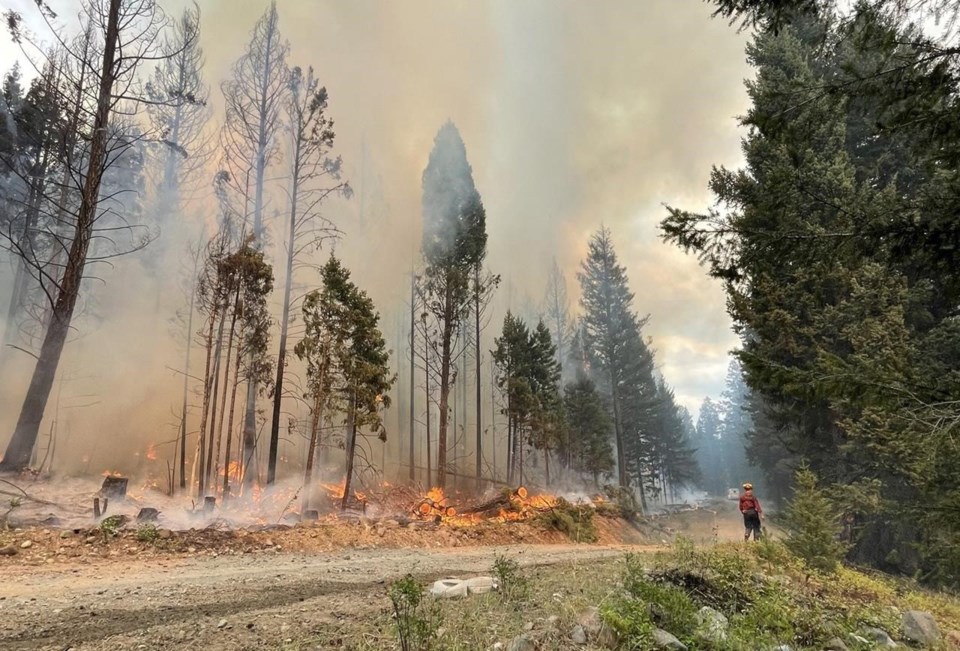VANCOUVER — The days of fighting wildfires are long and exhausting, so when crews return to camp, the last thing they want to do is search out a place to sleep or find something to eat.
Behind the firefighters battling what is B.C.'s most destructive wildfire season is an army of more than 1,400 contracted support staff, doing everything from first aid to sandwich making.
Among them is Susanne Callihoo, who manages the Takla incident camp in north-central B.C. for the contract service agency Horizon North.
Her job, she explained, is to ensure the camp runs smoothly, that fire crews have all their essential needs met and are as "comfortable" as possible when they finish a shift on the fire lines.
"They're away from home … so we want to keep them well fed and housed," she said.
The small camp has a staff of about eight workers, which includes a chef, cooks, a health staffer, a janitor, a maintenance worker and a designated sandwich maker whose sole job is to ensure each firefighter is equipped with about four sandwiches per day.
Shawn McKerry, a former wildland firefighter in Alberta, knows what these people need for support. Now the dean of Lakeland College emergency training centre in Vermilion, Alta., McKerry previously helped battle some of Alberta's most ferocious and historic wildfires.
That included the 2011 Slave Lake wildfire that destroyed more than 400 buildings and the 2016 Fort McMurray wildfire that forced nearly 90,000 people to flee Canada's oilsands region and reduced thousands of homes to ash.
After a gruelling day on the fire lines, he said most firefighters are completely exhausted and camp is their refuge.
"If you want to keep them motivated, high morale and keep them working, you've got to try to be able to support them where (you) can," he said in an interview.
"Camps aren't the most ideal experience, (but) fortunately, you've got a lot of motivated people who want to go out and help, that are willing to sacrifice some of those comforts — or almost all of those comforts — to get out there and assist in the effort."
Those efforts continue to be tested as crews across Canada battle the worst season on record. The Canadian Interagency Forest Fire Centre has reported more than 131,000 square kilometres of land and forest have been scorched across the country.
B.C. is experiencing its most destructive season on record for area burned with more than 15,000 square kilometres charred, surpassing the previous record of 13,543 square kilometres set in 2018.
In a social media post last month, the BC Wildfire Service highlighted the contracted staffers it said play "critical" roles in the provincial fire fight.
Such jobs include heavy equipment operators, First Nations crew members, first aid attendants and medics, camp and facility managers, kitchen staff, danger tree assessors, fallers, food service staff, forest industry experts, contract firefighters, pilots and air support staff, as well as various other trades, the service said.
Provincial fire information officer Mike McCulley said such workers are often easily overlooked by those outside the service.
"It's a really complex organization and there are many moving pieces to the puzzle," he said in an interview. "I think folks just think that it's just firefighters on the ground fighting fire and that's so far from the truth."
McKerry said, after a day in the field, most firefighters needs are simple.
"When you get back to camp, the best luxury you can have is clean washrooms and access to food," he said.
At the Takla camp, Callihoo said most firefighters sleep in tents, but working showers, washrooms and a workable kitchen equipped with a dining area are set up on site.
Food quantities are determined based on the number of firefighters on scene, with groceries delivered once a week, she said.
"It's a juggling process because you want to make sure you have enough food for everybody," Callihoo said.
Excess is much better than not having enough, and any unused food will be sent to another camp, she said, noting that numbers at the camp change quickly as the service often rearranges how many firefighters are at each site based on needs.
"It's a day-by-day operation here," Callihoo said.
She added that most of the problematic fires are burning elsewhere in the province.
"Fires here, to my understanding, are a little bit more controlled, but they don't want to leave them. With warmer weather coming up, it may cause sparks so we're going to leave a team here until we start seeing what's going to go on."
McKerry said such camps are often only used when fires are burning in rural locations and it is not possible for staff to stay at hotels.
"It's about accessibility," he said. "From an emergency management perspective, if you have access to hotels, that's a godsend because then you're not relying on those other pieces of infrastructure."
But when camping is necessary, firefighters always recognize the value of staffers like Callihoo, he said.
"It's all the things you may not necessarily think about, but it's beautiful to have those people there that just come in and ultimately make everybody else's life a little bit more easy and comfortable."
This report by The Canadian Press was first published Aug. 6, 2023.
Brieanna Charlebois, The Canadian Press



